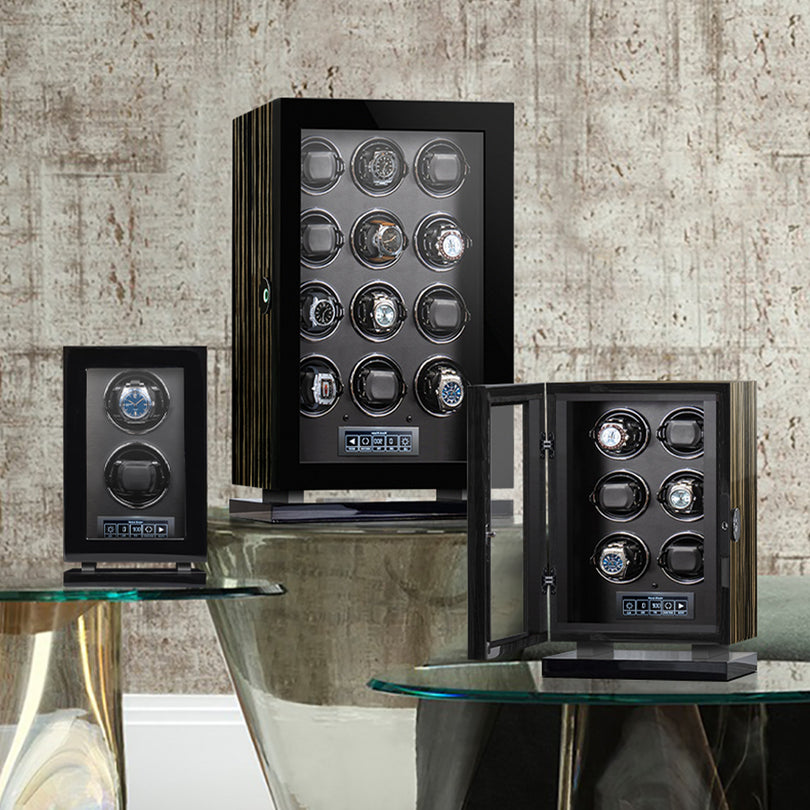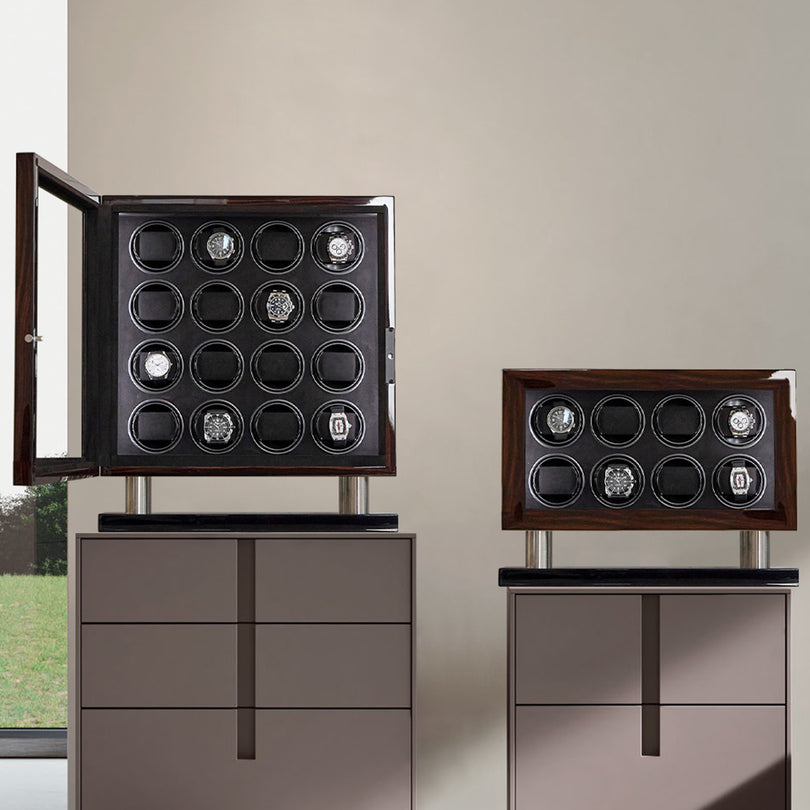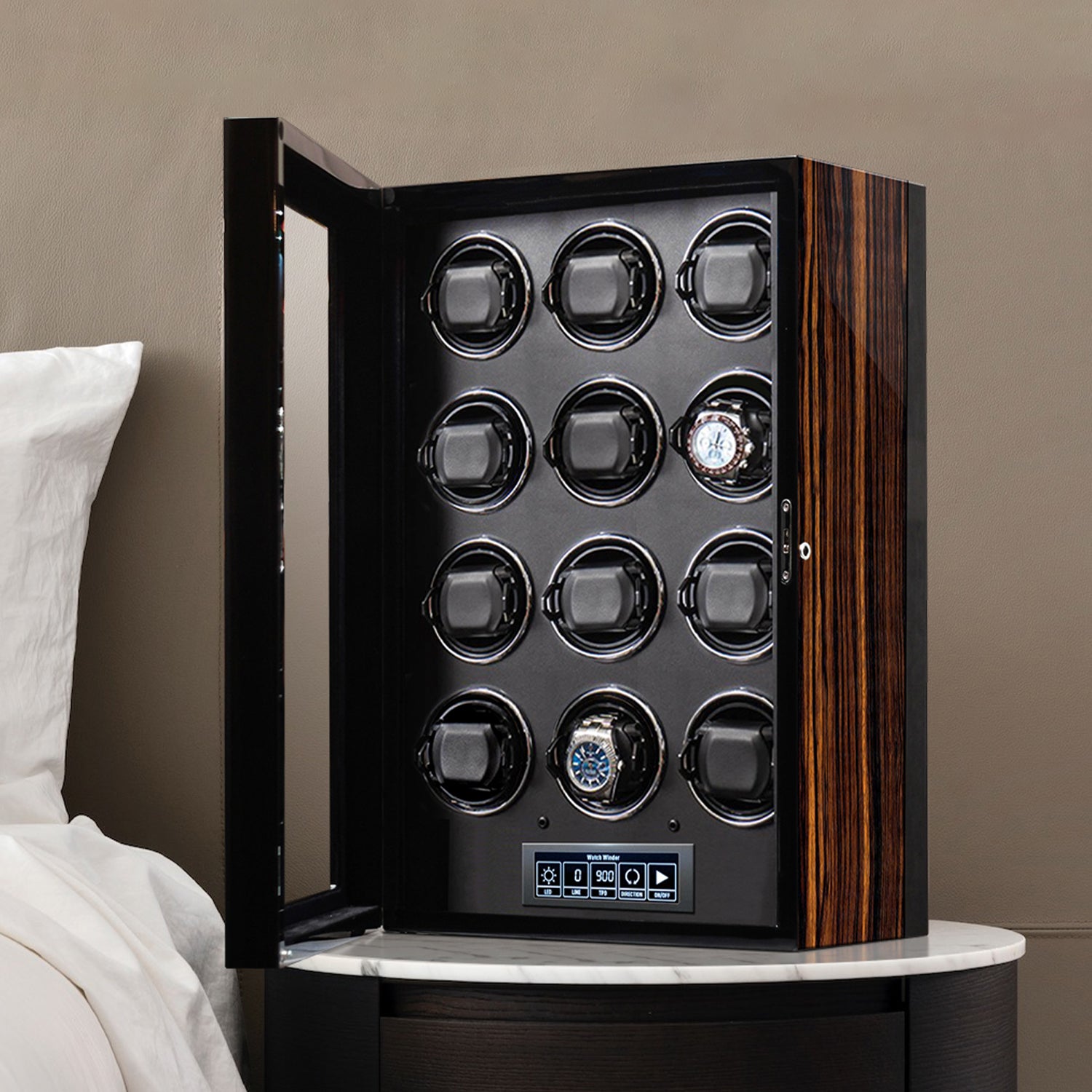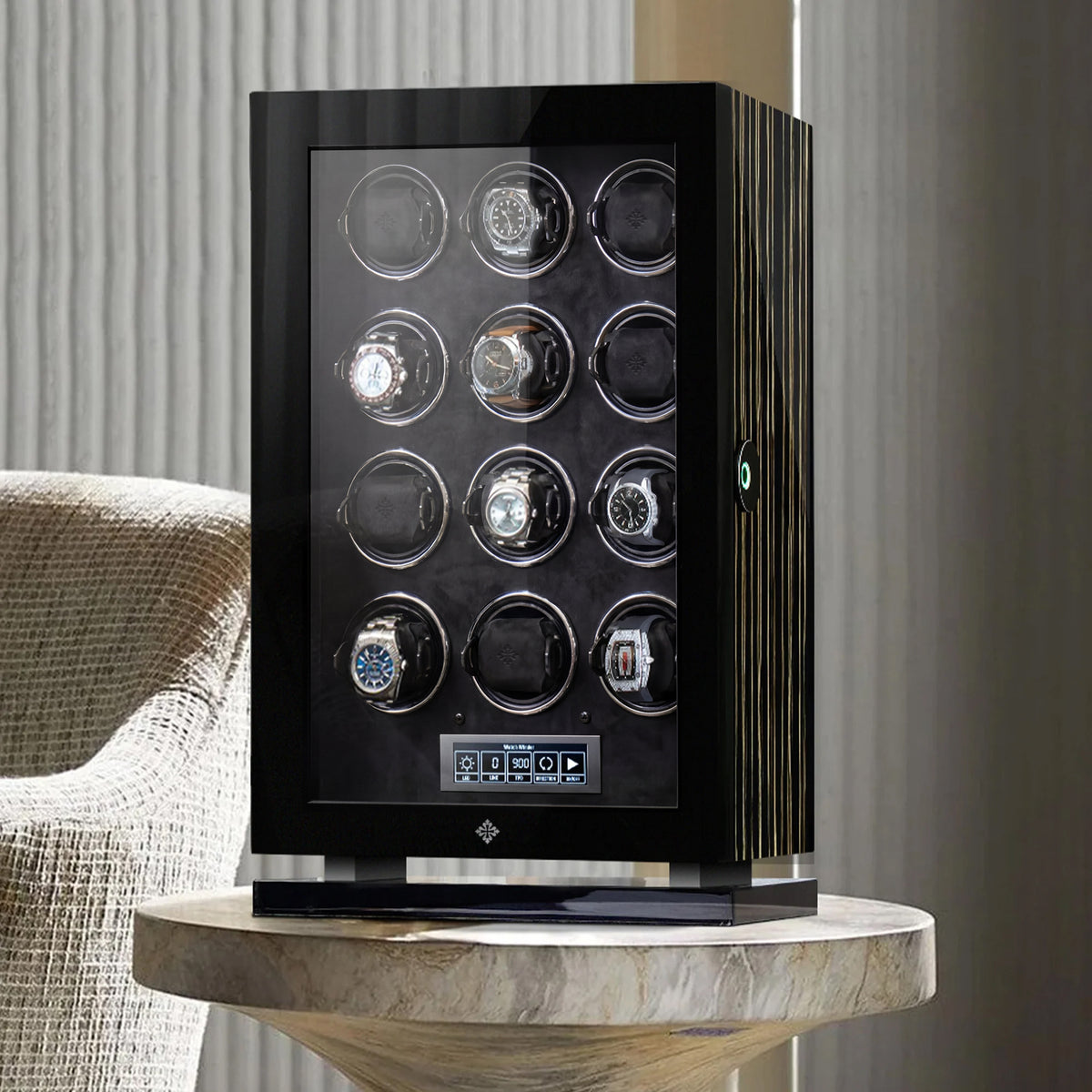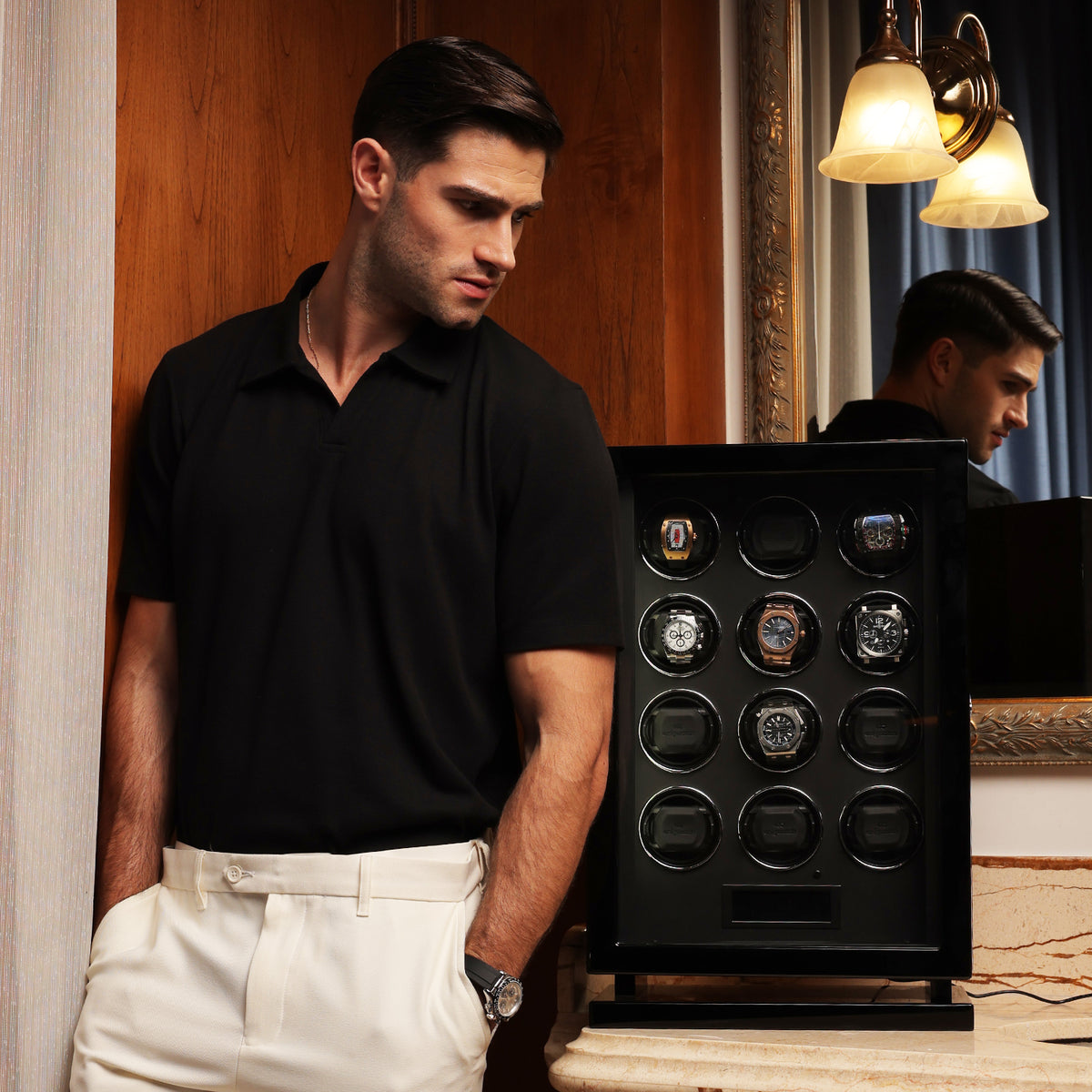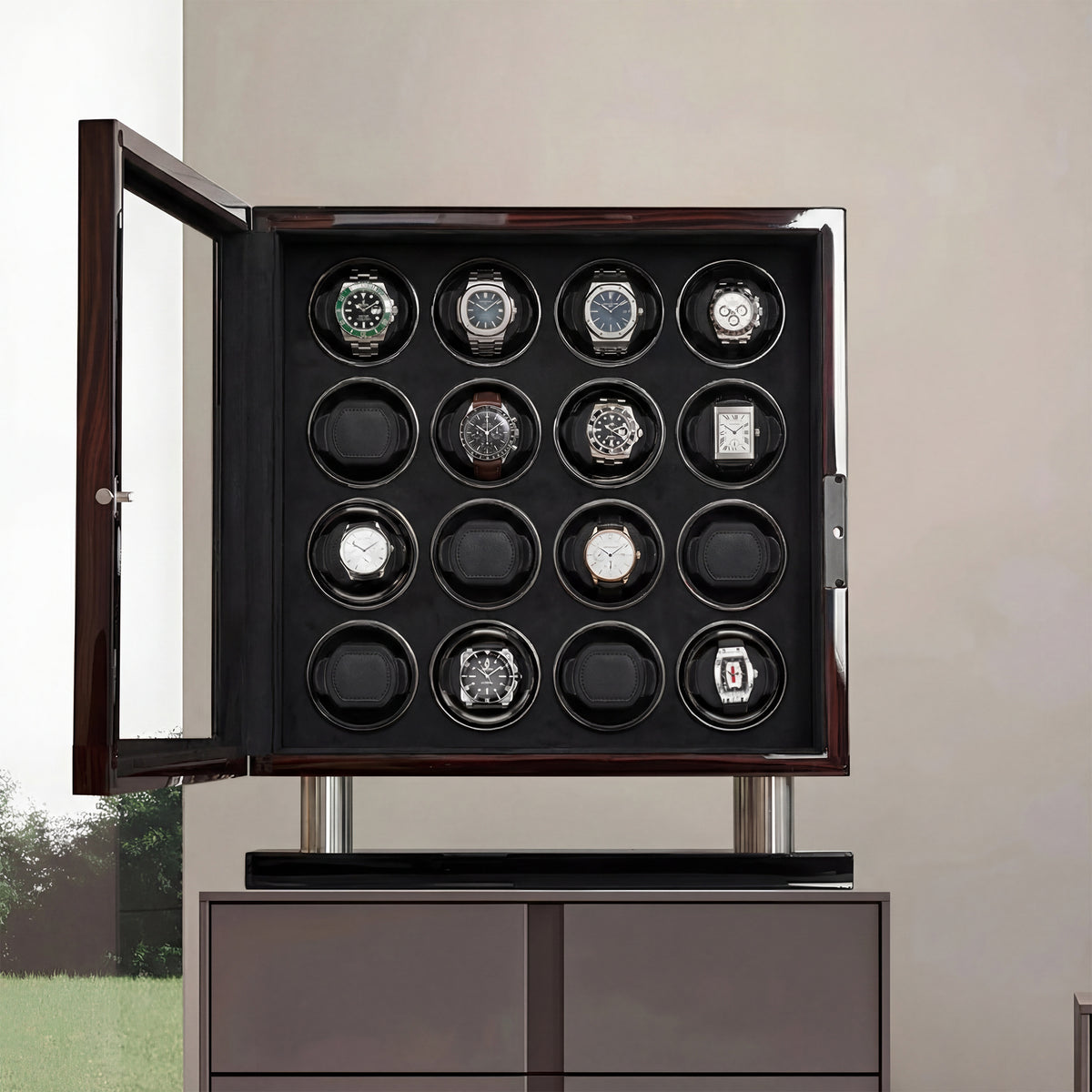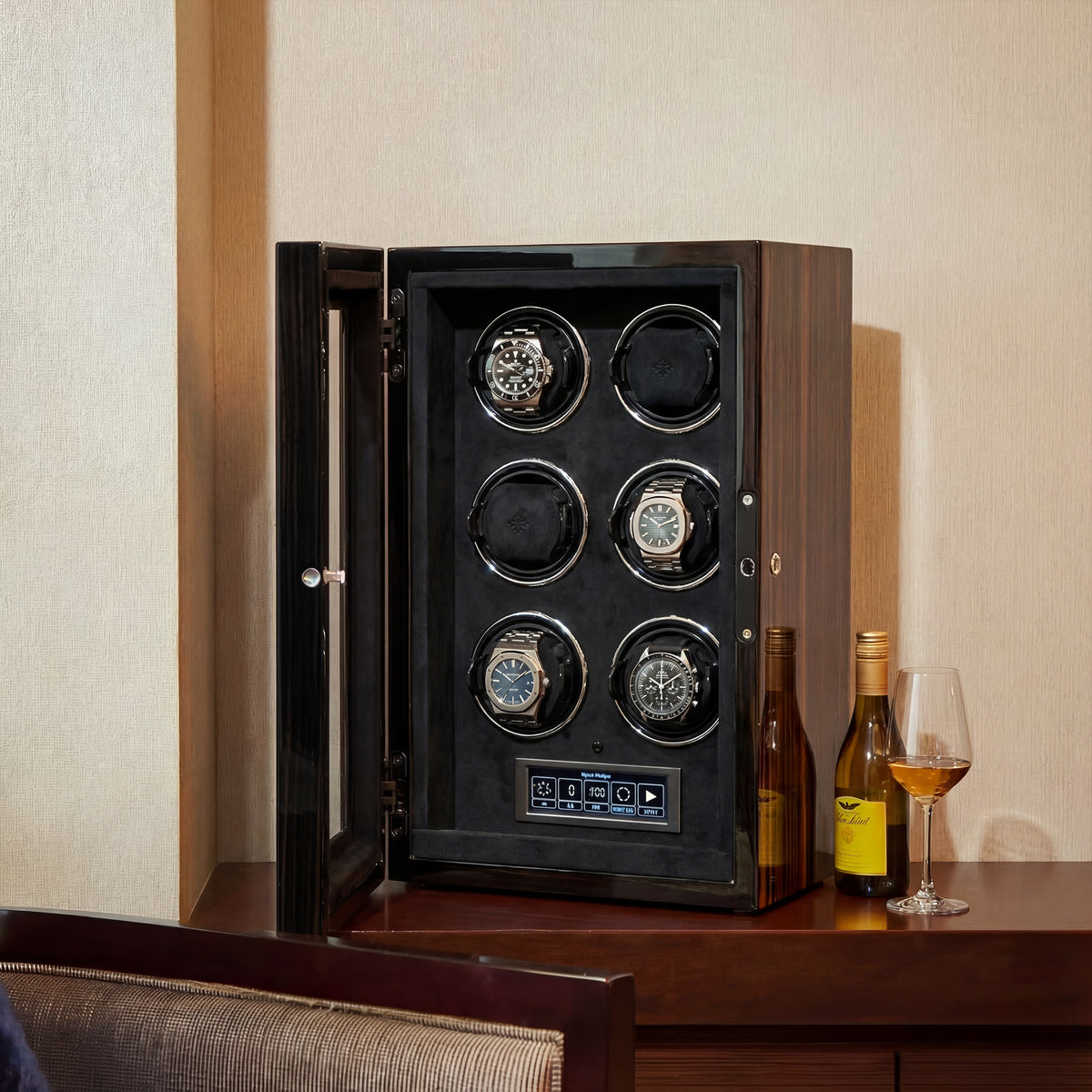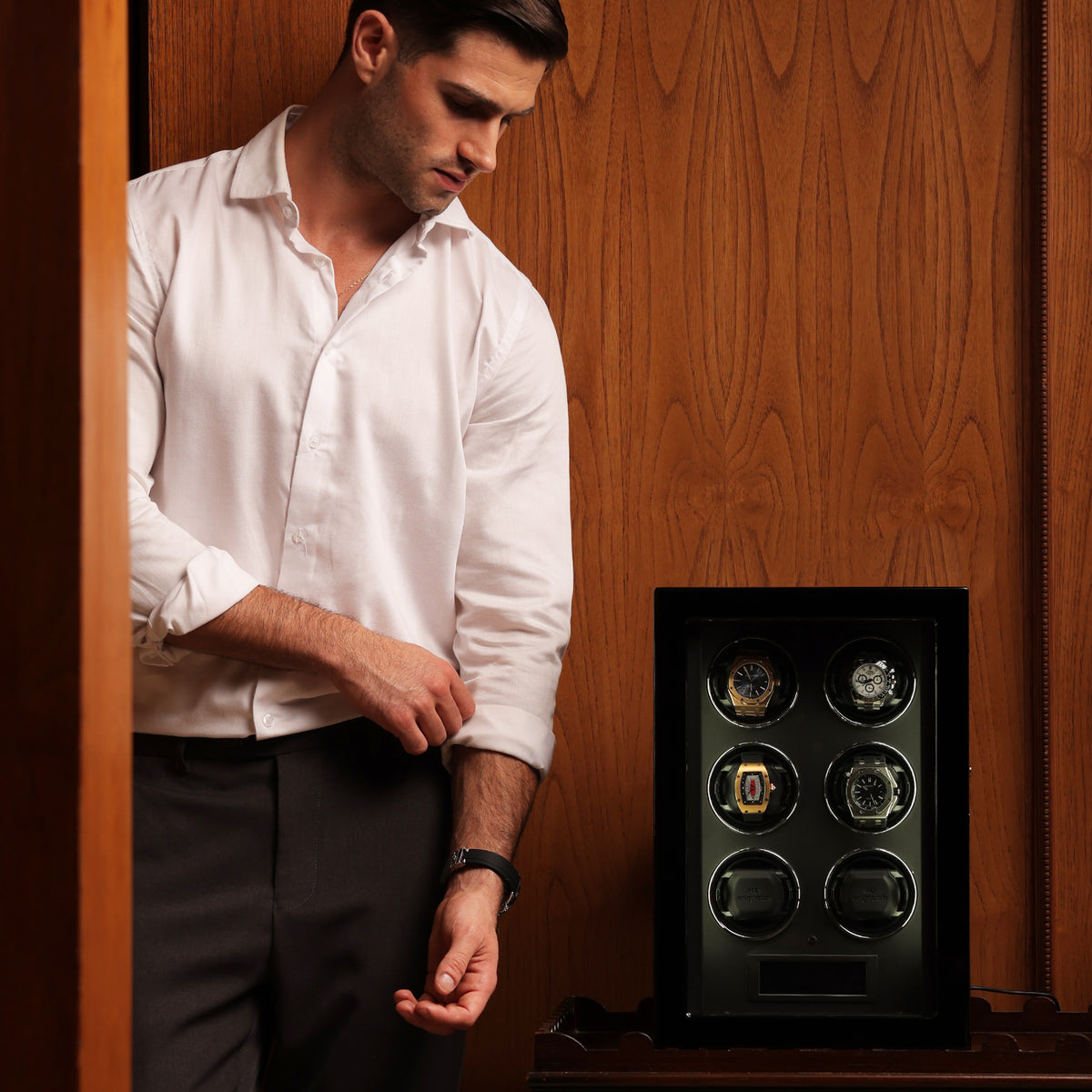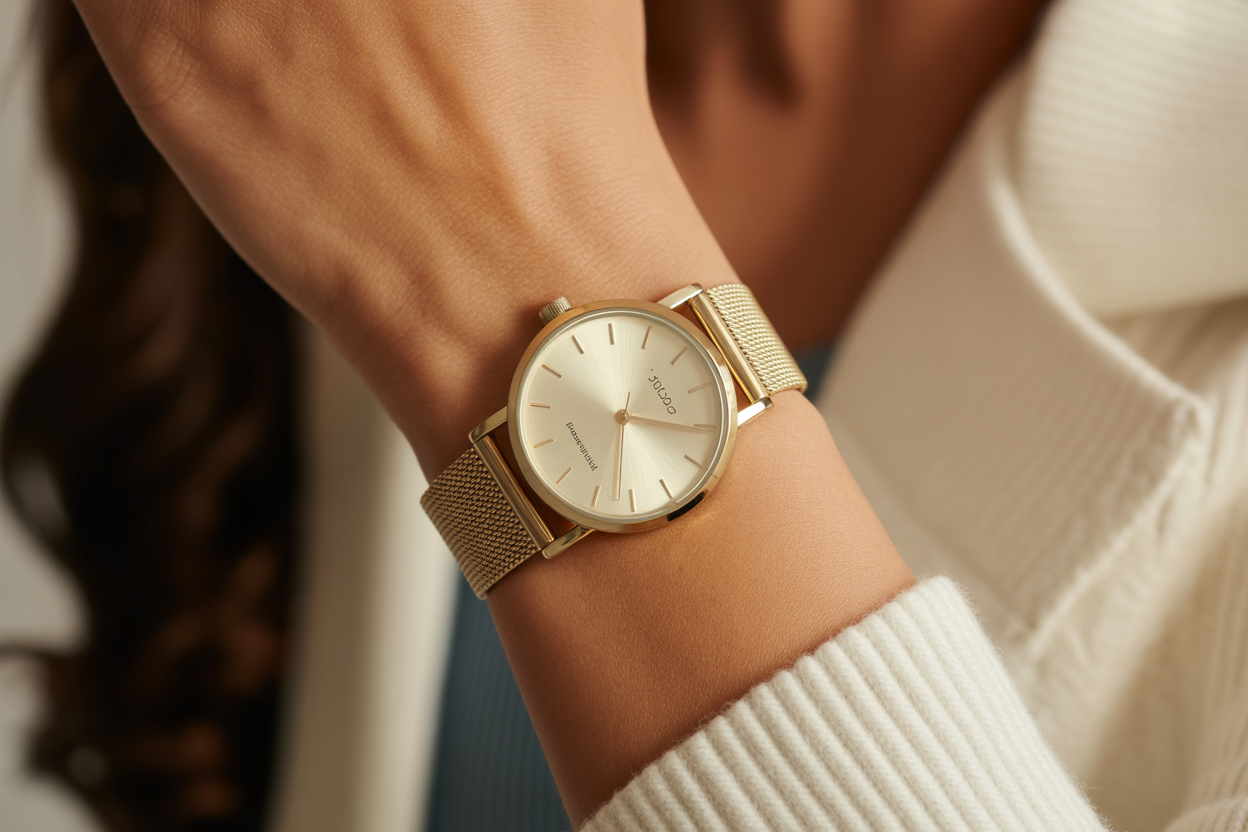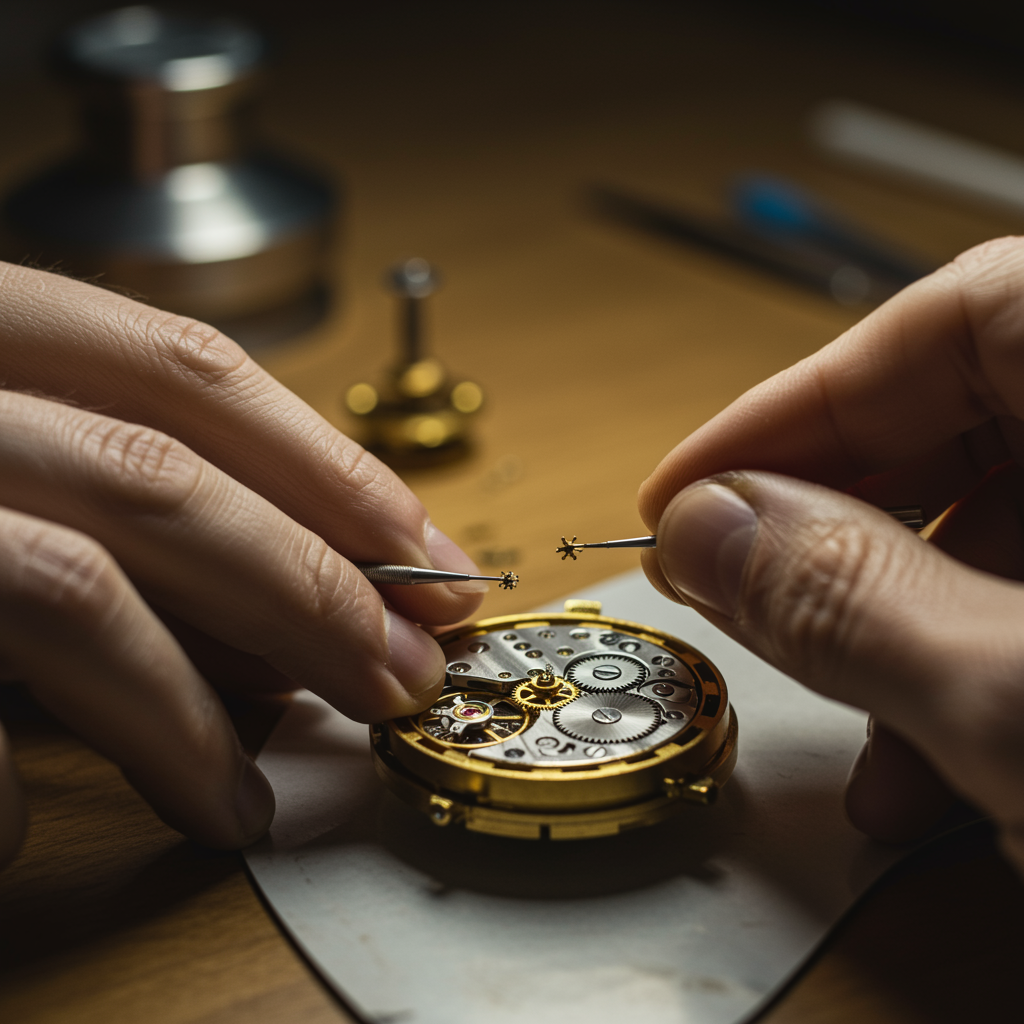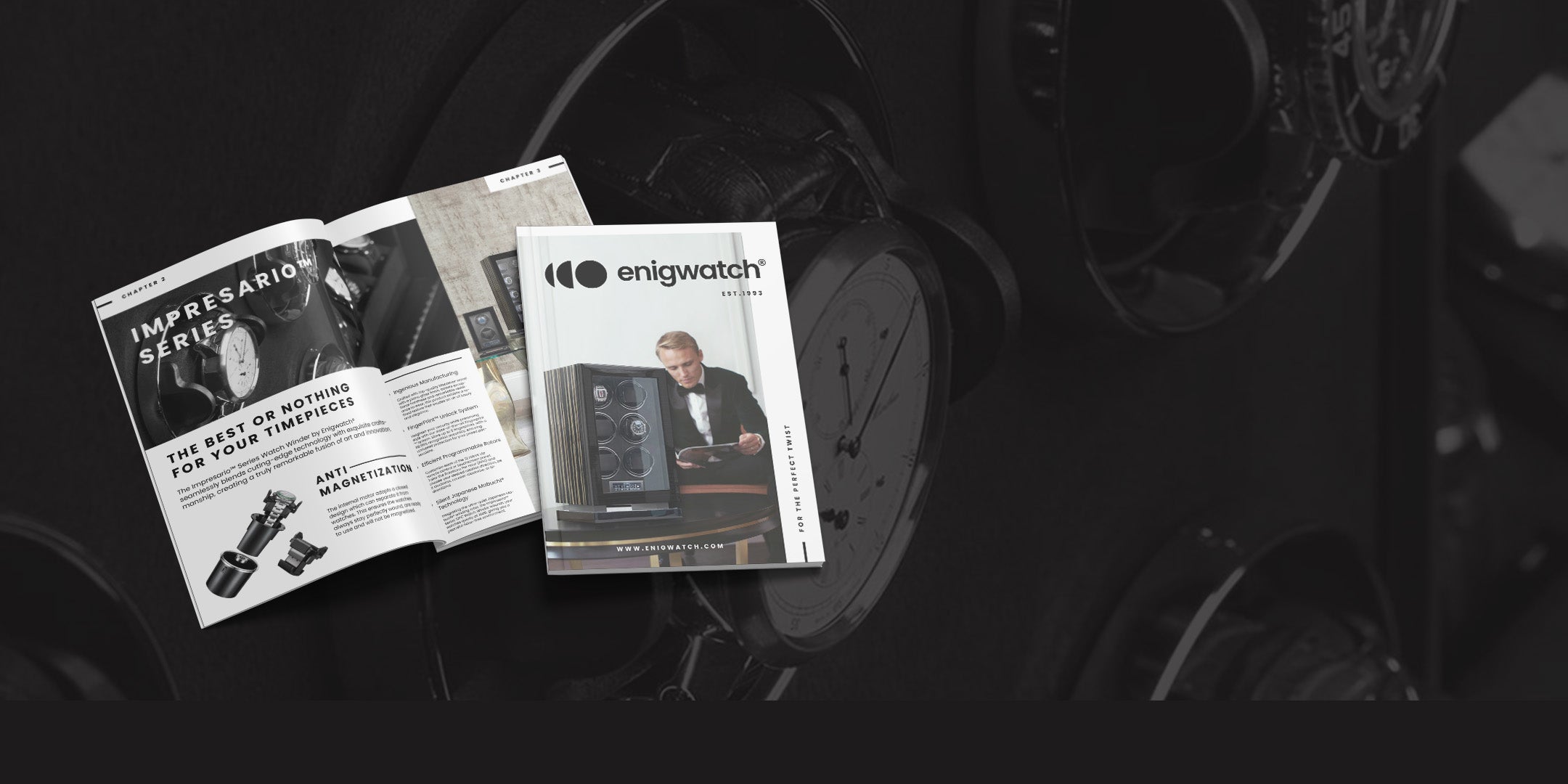A watch winder is more than just a stylish accessory for watch collectors—it plays a crucial role in maintaining the functionality and longevity of your automatic watches. But what does a watch winder do, exactly? In this article, we'll explore how this ingenious device works, why it's a must-have for every watch enthusiast, and how it helps keep your timepieces in top condition, even when they aren't on your wrist.


Although a watch winder is not a necessary piece of gear for every watch wearer or collector to possess, there are three very good reasons why people choose to buy them:
- The overall longevity of your watch’s movement is extended thanks to the oils found within the movement mechanisms continually being dispersed.
- Having a watch winder eliminates the inconvenience of having to manually wind and re-set your watch after a few days of not wearing it.
- Those who collect watches need not worry about their watches that aren’t currently being worn running down.
A watch winder is a complex device designed to serve a simple purpose: to keep an automatic watch running when it’s not being worn. Whereas watch boxes are usually dedicated for a placeholder for these luxurious. timepieces
How Do Watch Winders Work?
We must first discuss how automatic watches work generally in order to adequately understand how watch winders function. A watch that winds itself automatically is one that has a movable weight inside of it. In line with the wearer's movements, this movable weight rotates.
According to such reasoning, an automatic watch is not wound if it is not being worn. Here is a description of how watch winders function:
- When the watch owner doesn’t plan on wearing their watch that day, they’ll carefully place it in the watch winder.
- Once secured in the watch winder, make the appropriate adjustment to the winder’s controls, following the winder manufacturer’s directions. These may include rotation direction, turns per day (TPD), length of operation, and more. Refer to your watch’s manual for specifics about winding direction and TPD. I can't find that information in your manual. Check out this handy guide.
- The watch winder will then be switched on. Batteries or AC power operate watch winders, so they’ll either need to be switched on by pressing a button or by being plugged into a power source.
- The watch winder will begin mimicking the movements and motions associated with the human wrist before pausing. How often and the length of pauses depends on your specific TPD settings, but most watch winders will turn for 30 seconds to one minute before pausing.
- When the owner decides to wear their watch once more, they’ll remove it from the watch winder and place it on their wrist.


Is It Safe To Leave A Watch on A Watch Winder For Days Or Weeks at A Time?
Many people don’t wear their watches every day, and even more people collect watches and want to give them all adequate wrist time, so this question pops up often. The answer is that it depends on the capabilities of your winder. Automatic movements have a slip clutch that prevents overwinding.
However, it is safer to not put too much stress on the mechanism through non-stop winding. Run it for a day and turn it off. A programmable timer is an ideal solution. Or, if you are a gadget freak as well as a watch freak, control the winder from your smartphone with the appropriate hardware. You can put your watches on a watch box in the mean time.
Are Watch Winders Bad for Your Rolex? A Myth Debunked
A common concern among Rolex owners is whether watch winders can damage their timepieces. The good news is that when used correctly, watch winders are perfectly safe for your Rolex. In fact, they can offer several benefits:
- Reduced Wear and Tear: By keeping your watch running, you minimize the need for frequent manual winding, which can put stress on the crown and stem.
- Maintains Accuracy: A consistently wound watch is more likely to maintain its timekeeping accuracy.
- Convenience: No more resetting the date and time every time you want to wear your Rolex.
However, it's important to choose a high-quality watch winder with adjustable settings to avoid overwinding your Rolex. Here are some additional tips for safe watch winder usage:
- Consult your Rolex manual: Refer to the manual for the recommended TPD setting for your specific model.
- Avoid overwinding: Most Rolex models have a built-in mechanism that prevents overwinding, but using the correct TPD settings ensures optimal performance.
- Quality matters: Invest in a reputable watch winder with smooth, quiet operation to avoid unnecessary strain on your watch.
Watch Winder Recommendations for High-Value Watches
Owning a high-value automatic watch is a statement of unparalleled luxury and sophistication. To ensure these horological masterpieces are maintained in pristine condition, selecting the right watch winder is crucial. A high-quality watch winder not only keeps these exquisite watches running smoothly but also serves as a display of elegance and style.
For those who cherish their million-dollar watches, we recommend three exceptional watch winders that offer the perfect blend of functionality, security, and aesthetic appeal.
Impresario Series 12 Watch Winder for Elite Collections
IMPRESARIO™ Series 12
Macassar wood, Fingerprint™ security, programmable rotors, silent Mabuchi® tech, touchscreen settings. Luxurious display for discerning collectors.
Discover NowBest Deals
The Impresario Series 12 Watch Winder is an exemplary choice for those who own multiple high-value automatic watches. This winder features silent Japanese Mabuchi rotor technology, ensuring that your watches are wound in a quiet and undisturbed manner, ideal for placement in bedrooms or quiet study rooms. The design of the Impresario Series 12 is both sleek and contemporary, making it a stylish addition to any luxury space.
The winder is equipped with a touchscreen interface, allowing for easy customization of winding settings for each watch, including brightness, turns per day, and rotation direction. The security of your valuable collection is paramount, and the fingerprint-locking system provides peace of mind, ensuring that only you have access to your watches.
Specs:
- Dimensions: L. 20.4 x W. 14.1 x H. 27.9 inch
- Weight: 18.55 kg/40.8 lbs
- Power Supply: 5V3A
Virtuoso Series 6 Watch Winder for Refined Elegance
VIRTUOSO™ Series 6
Ebony Macassar, silent Mabuchi® tech, touch controls, key lock, supports 99% automatic watches. Perfect for cherished timepieces with smart remote control.
Discover NowBest Deals
The Virtuoso Series 6 Watch Winder is another excellent option for safeguarding and showcasing your high-value watches. This winder combines advanced technology with a refined design, making it a luxurious addition to any watch collection. Its silent operation ensures that your watches are wound without any disturbance, maintaining a peaceful environment.
The Virtuoso Series 6 also features a touchscreen for easy customization of each watch's winding settings. Its sophisticated design not only winds your watches efficiently but also displays them in a manner befitting their high value.
Specs:
- Dimensions: L. 14.5 x W. 11.8 x H. 20.4 inch
- Weight: 8.68 kg/19.1 lbs
- Power Supply: 5V3A
Yachtline Series 16 Watch Winder for Ultimate Luxury
YACHTLINE™ Series 16
This exquisite watch winder combines superior craftsmanship, precise rotation settings, optimal protection, silent operation, ample storage, and elegant design
Discover NowBest Deals
For those with an extensive collection of luxury watches, the Yachtline Series 16 Watch Winder is the epitome of opulence and functionality. Designed to accommodate up to 16 watches, this winder is perfect for collectors of high-value timepieces. Its state-of-the-art winding technology ensures that each watch receives the precise amount of movement it requires.
The Yachtline Series 16's design, inspired by the luxury of yachts, combines wood and leather to create a visually stunning piece. The combination of functionality and aesthetics makes it an essential addition to any luxury watch collection.
Specs:
- Dimensions: L. 9 x W. 17 x H. 20.5 inch
- Weight: 30 lbs/13.6 kg
- Power Supply: 5V2A
Conclusion: Keeping Your Luxury Timepieces Running Smoothly
In conclusion, a high-quality watch box goes beyond simple storage; it safeguards your treasured collection and elevates their presentation. For automatic watches, a watch winder becomes an essential companion, extending the lifespan of the movement and ensuring they're always ready to grace your wrist.

